Scotland's homes: One cost that's falling
- Published
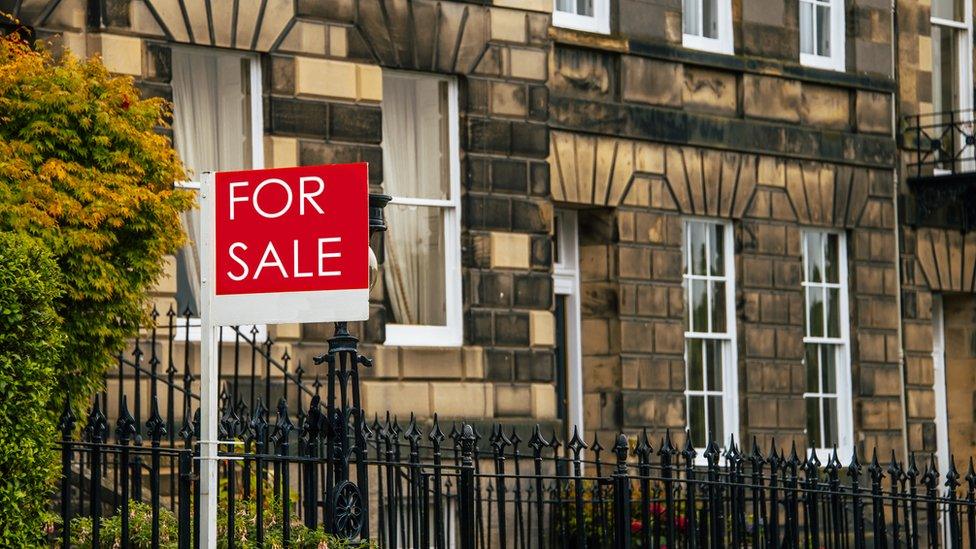
Higher borrowing rates and economic uncertainty are weakening the housing markets - with slight falls in prices, and a more significant decline in buyer numbers.
Two years of unusual sales patterns and price increases coming out of lockdown are working their way out of the system, though prices emerged from that a lot higher, and many will welcome steadier prices.
Private landlords are finding a hostile environment, and are selling up. That could ease first-time buyer prices, but won't ease rents.
A tip for 2023: keep an eye on the market for homes. You may have more pressing issues around the cost of living, but the housing market both reflects and drives wider changes in the economy.
A rising market creates at least an illusion of growing wealth, driving expenditure beyond housing, and a falling one - as you might expect - does the opposite.
It should, however, help to make homes more affordable for those who would like to enter the market, many of whom have been priced out in the past two decades or more.
If you don't own your home, but rent in the private sector, it may matter even more that you keep an eye on what's going on. Supply and demand matters a lot there too, and there are supply problems.
The forecast from the Scottish Fiscal Commission is that the price of the average private home in Scotland is going to fall 5% during next year.
In the Scottish market, that's very unusual. Previous downturns have seen prices stall but rarely fall. This reflects the more steady, plodding nature of the market. It doesn't rise with the same exuberance as you might find in London and south-east England.
John Boyle, an economist specialising in the private housing market with estate agency Rettie & Co, also foresees a 5% fall next year. He points out that it won't be that sharp a correction in prices, because there hasn't been a house price bubble to burst.
There were, however, some sharp increases coming out of the shutdown of the market in the first months of Covid, so you could see it as a correction on inflated prices rather than a fall.
The sharp annual increases of well over 10% over 2021 into 2022 have fallen back, and the more reliable indexes across the UK are showing month-on-month falls in price during autumn.
Heading for the coast
During lockdown, some people with growing families had quickly found out that they could use more space, including a garden. That led to a pent-up surge in demand, particularly for homes with more space.
The other theme emerging from then was a surge in demand for homes at a greater distance from workplaces. Working From Home meant many people learned how not to commute to work, and showed employers that it could be made to work for them too.
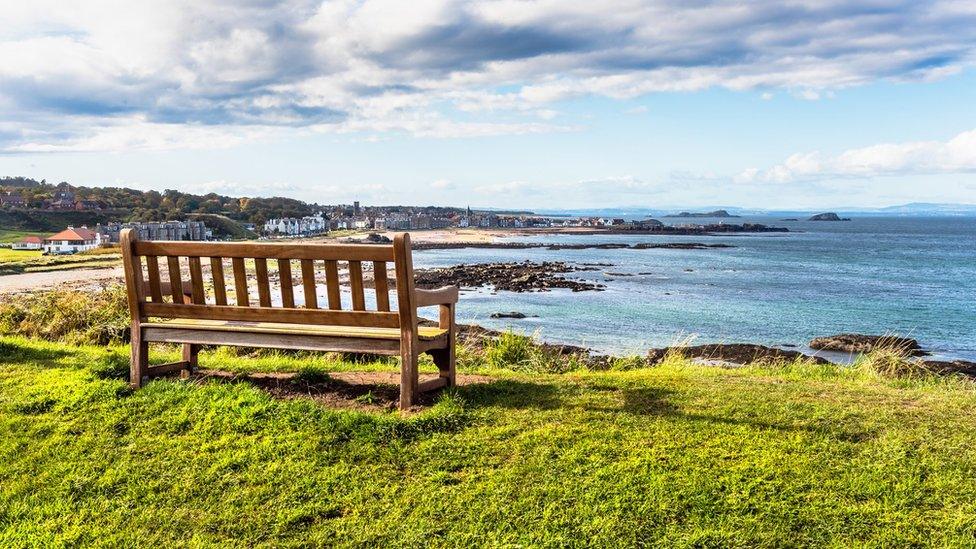
Demand for properties in coastal towns remains strong
So up went the prices for rural, and notably coastal, properties. I've moved in to one such property in the Highlands, about 150 miles from the BBC Scotland head office. Our neighbour did likewise, selling in Surrey and buying a house three times the size, while he works online with colleagues in an office near Gatwick airport.
A further trend that estate agencies noticed was people who commute less regularly. So they may not move hundreds of miles, but a flit to the Ayrshire coast offers more space and quality of life, while a reasonable distance to travel into Glasgow once or twice a week.
So what are they noticing now? Not so much a fall in prices as a fall in the number of transactions. For years, prices have been helped upwards by the shortage of supply coming into the market. That's partly new builds falling short of demand for them, and partly people holding back on older homes being put up for sale.
Estate agents and surveyors report that recent months have seen demand ease off as well, taking the upward pressure off prices where homes go to competitive bids, and meaning there are fewer transactions.
Expectations on price, among the membership of RICS, the surveyors organisation, are weighted heavily towards declines. They don't measure by how much, but balance those surveyors who expect to see falls against those who expect to see rises. Some 29% last month said they foresee increasing prices, but 69% forecast falls.
'Moron premium'
Of course, nine consecutive rises in mortgage rates over the past 12 months are having an impact.
Younger people who have known mortgages when they're exceptionally cheap and competitive are learning that you shouldn't bank on it staying that way. A normalisation of interest rates, from the low levels post-2008 financial crisis, was long overdue, though it didn't have to happen so sharply this year.
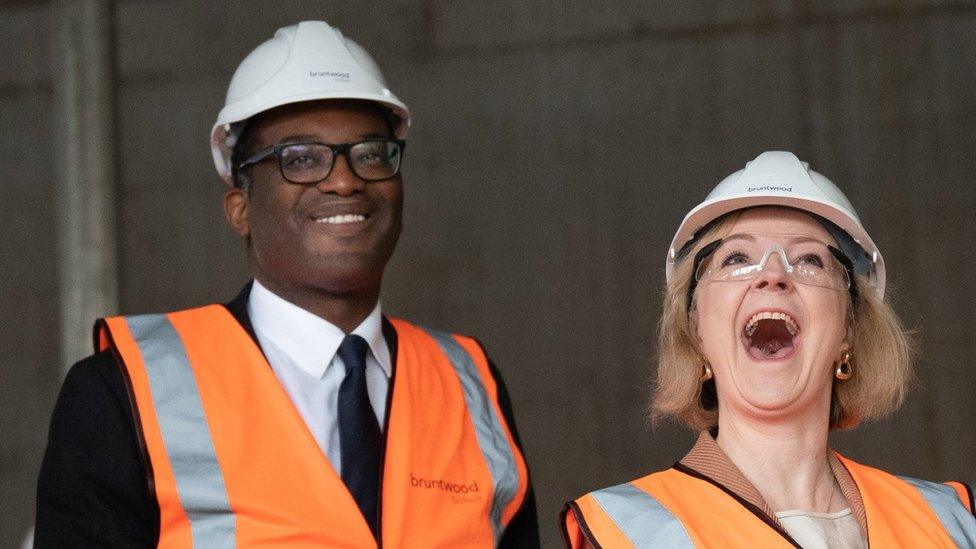
Kwasi Kwarteng and Liz Truss enjoyed only a short time in office but their impact was far reaching
And it really didn't have to happen with the shock to the system from the Liz Truss/Kwasi Kwarteng budget in late September, which spooked markets and sent the cost of borrowing sharply up.
That "moron premium" - a term coined somewhere in the City of London to describe the spike in borrowing costs during these daft days of autumn - has since subsided. But it was a sharp wake-up call to borrowers and home-buyers.
Around 80% of mortgage holders are on fixed rate mortgages, and are protected from such volatility - until they have to refinance. And a lot of people are going to see a steep increase in monthly bills over the next year.
John Boyle says taking on the average Scottish mortgage, with an average two-year term, costs £500 more per month than it did a year ago.
That helps explain why the sharp annual increase in the price of a home, of well over 10% over 2021 into 2022 have fallen back. The more reliable indexes across the UK are showing month-on-month falls in price during autumn.
The Nationwide index has fallen from a peak of 14% to 4.4% in the year to November. Halifax saw a peak of 13% and in the year to October, prices were up 8.8%.
Savills, at the premium end of the market, issued its new year market update on Wednesday, noting a divergence in markets that are most dependent on mortgages and those that are not.
Across its portfolio, a 0.7% price fall in the past three months in Scotland is less of a fall than other parts of the UK, and coastal Scotland is among several markets near the coast which it forecasts will be most robust over the next five years.
John Boyle notes that the new-build market is showing most signs of disruption already. The costs of materials and labour have gone up steeply, and with demand weakening, housebuilders are slowing up the pace at which homes come on to the market.
Boyle says you are more likely to find discounting and incentives such as help from the housebuilder with offloading your current home.
Landlords exit
And what of the private rental market? The proportion of Scots who depend on private landlords for their housing has nearly doubled in the past 15 years or so. Those who might previously have bought their homes have seen that opportunity lifted out of reach by rising prices.
But rent prices have been rising as well. They, too, depend on demand, which has been rising, and supply, which is problematic.
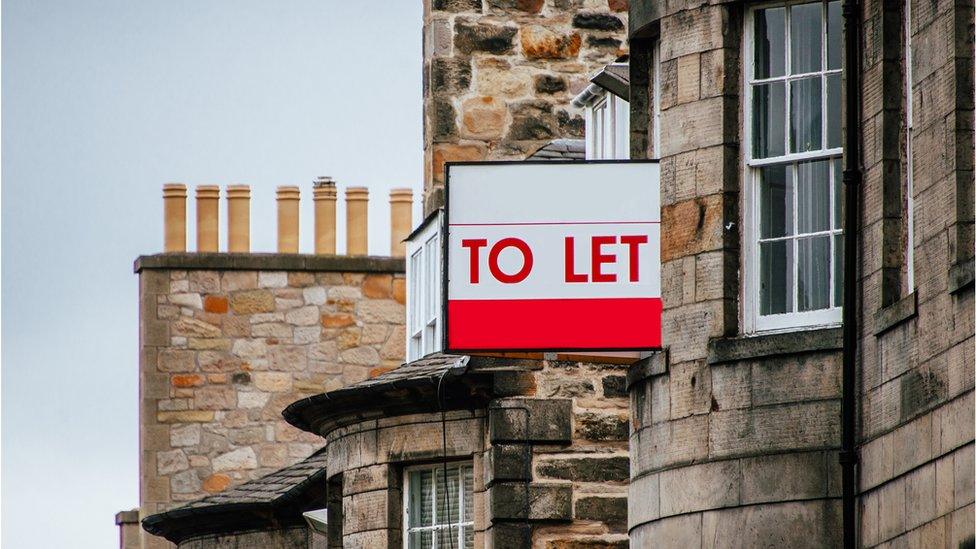
A shortage of rented properties has been driving up rents
Changes in the tax on owning a second home for rental have squeezed smaller-scale landlords. Growing regulation of the private rented market has also made it more costly to rent out, and those who have depended on short-term lets, through platforms such as AirBnB, now face further hurdles to register with councils. If they don't get permission, that business plan may no longer stack up.
A further blow to landlords this autumn came with the Scottish government's freeze on rents until next April, to help tenants handle other rising costs, notably of energy and food.
This plays well with the notion that landlords are lordly and loaded and can afford to take more of the widespread cost of living pain. But they are businesses which invest in assets, and their cost of borrowing has been going up.
Plus the draft Holyrood budget for 2023-24 includes a hike in the Additional Dwelling Supplement to Land and Buildings Transactions Tax.
In addition to any LBTT that a buyer may have to pay in slabs of different rates on a property (5% over £250,000, rising to 10% over £325,000, etc, with no change in those thresholds as prices have risen), any purchase of a rental, second or holiday home carries a 6% supplement. That rate has doubled in three years.
So we're being told that landlords are getting out of that market. That may help subdue prices for buying the kind of home that is typically rented. That's good news for first time buyers. But with lower supply of rental homes, expect to see rents going up.
The better news for renters is that you can see build-to-rent blocks under constructions in cities, including a vast one, with 400 units, on the Broomielaw side of the Kingston Bridge in Glasgow. That is part of a transition from the landlord business moving from small-scale investors in one flat or a cluster of them to big financial institutions.
That private rented sector is the one most in need of maintenance and repair, and it has the least energy efficient standards.
And that's where the other emerging element of the property market is worth watching: with energy bills so much higher in 2023 than they were a year ago, prices may increasingly reflect the cost of heating older, draughtier homes.
Where Scotland's governments - local, Holyrood and Westminster - step in to improve the dire state of heating insulation in many homes, will have an influence on calculating a valuation of what they're worth.
Related topics
- Published4 October 2022
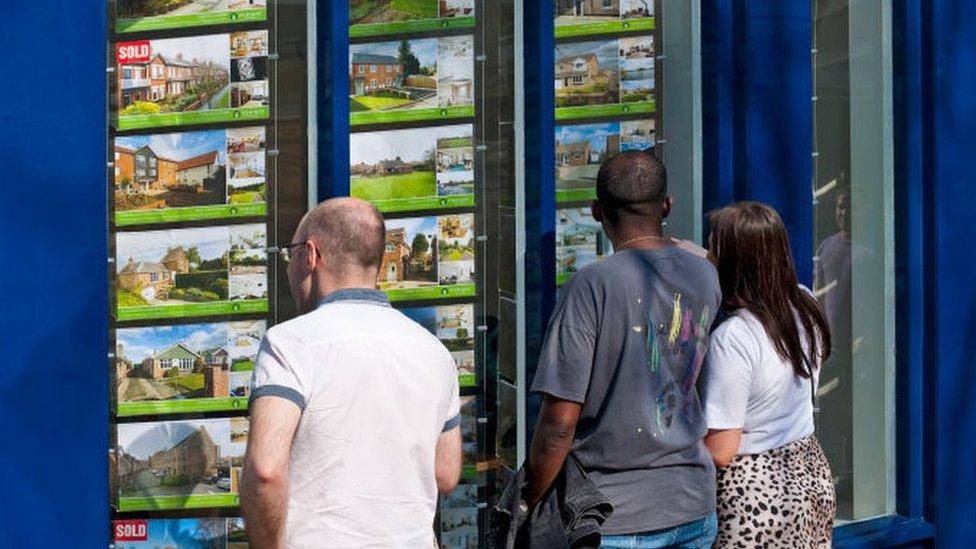
- Published19 October 2022
- Published6 October 2022

